Introduction
In today's rapidly evolving technological landscape, transitioning to a cloud-based infrastructure is not merely an option but a necessity for organizations seeking to remain competitive. The multifaceted process of cloud migration involves several critical stages, each requiring meticulous planning and execution. From defining clear migration objectives to optimizing the cloud environment post-migration, each step plays a pivotal role in ensuring a successful transition.
This article aims to provide a comprehensive guide on cloud migration, encompassing key aspects such as assessing IT infrastructure readiness, selecting the appropriate migration strategy, developing a detailed migration plan, identifying and managing risks, testing and validating the migration process, and ongoing optimization. By delving into these essential components, organizations can navigate the complexities of cloud migration with confidence, ensuring that they leverage the full potential of cloud computing to drive innovation, enhance operational efficiency, and achieve long-term business growth.
Defining Your Cloud Migration Objectives
Setting clear objectives for your cloud transition project is essential for success. Start by recognizing particular business requirements that the transition will tackle, such as improving scalability, enhancing security, or reducing expenses. For example, Deutsche Bank's transfer of roughly 19 million Postbank product contracts into its IT systems was driven by the need to consolidate two separate IT systems into one modern platform, enhancing scalability and operational efficiency. Make sure that these goals correspond with your overall business plan to offer a clear path for the transition. According to David S. Linthicum, an industry expert, assessing your current IT infrastructure and setting clear goals is the first step in transitioning to cloud-managed services. This method was similarly supported by Satyendra Kumar, who highlighted the significance of grasping security details and encouraging early cooperation among partners for a successful transition. By aligning your transition objectives with wider business plans, you can develop a roadmap that not only addresses current needs but also prepares your organization for future expansion. 'The computing market, valued at $723.4 billion in 2023, is anticipated to expand at a compound annual growth rate of over 18%, underscoring the considerable potential advantages of a well-planned migration strategy.'.
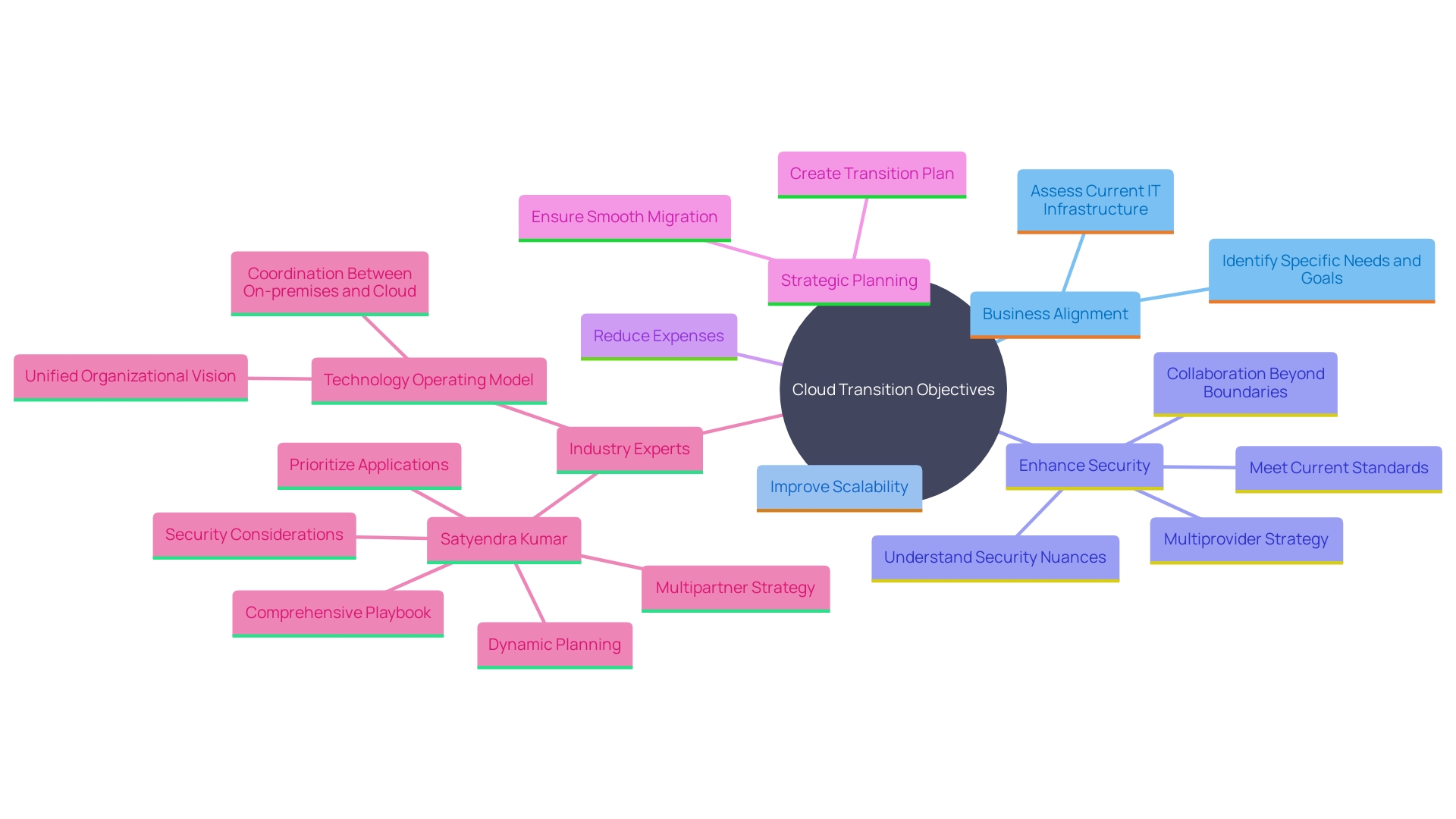
Assessing Your IT Infrastructure for Cloud Readiness
Begin a thorough evaluation of your present IT infrastructure, covering hardware, software, network capabilities, and current programs. Utilize robust assessment tools, such as diagnostic scripts and questionnaires, to collect and analyze relevant data. This process will reveal critical insights into performance, security, and compliance issues, as well as application compatibility with cloud environments. By identifying gaps or limitations, you can proactively address these areas to ensure a smooth and efficient transition. Such detailed evaluations not only clarify your IT environment’s current state but also enhance data protection, optimize performance, and ensure alignment with cloud-based solutions.
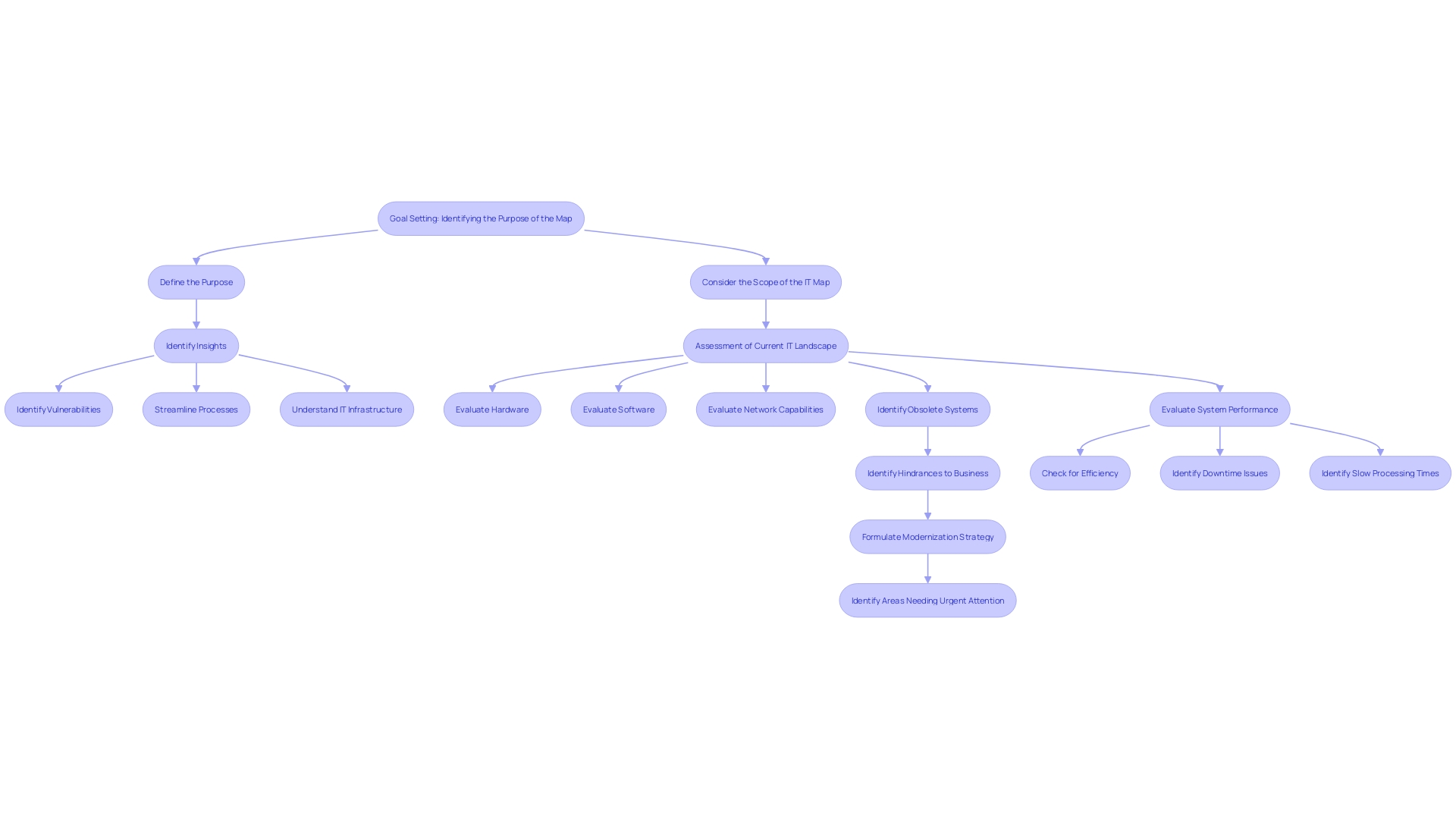
Choosing the Right Cloud Migration Strategy
Choosing the best migration plan requires identifying the most appropriate method according to your organization's particular requirements. Common approaches include lift-and-shift, re-platforming, and refactoring.
-
Lift-and-Shift: This approach entails transferring software to a remote server with minimal alterations. It's ideal for organizations looking to quickly migrate without altering the underlying architecture. However, this approach may not fully leverage cloud-native benefits, potentially leading to suboptimal performance and higher costs.
-
Re-platforming: This approach involves making a few cloud-optimized changes without altering the core architecture. It's a balance between lift-and-shift and refactoring, offering enhanced performance without a complete overhaul. Re-platforming is suitable for software that can benefit from cloud efficiencies without extensive redevelopment.
-
Reorganization: This approach involves redesigning software to fully leverage cloud-native features. While it requires significant effort and investment, refactoring can result in substantial long-term benefits, such as improved scalability, performance, and cost-efficiency. This approach is best for uses with high complexity and critical business functions.
The advantages and drawbacks of each approach rely on different elements, including complexity of use, business goals, and financial limitations. For instance, Lincoln Financial's success with a multiprovider, multipartner approach highlights the importance of early collaboration and security considerations in ensuring a smooth transition. By prioritizing requests based on business requirements and using a flexible method to planning, they accomplished a nimble transition, showcasing the efficacy of a carefully devised strategy.
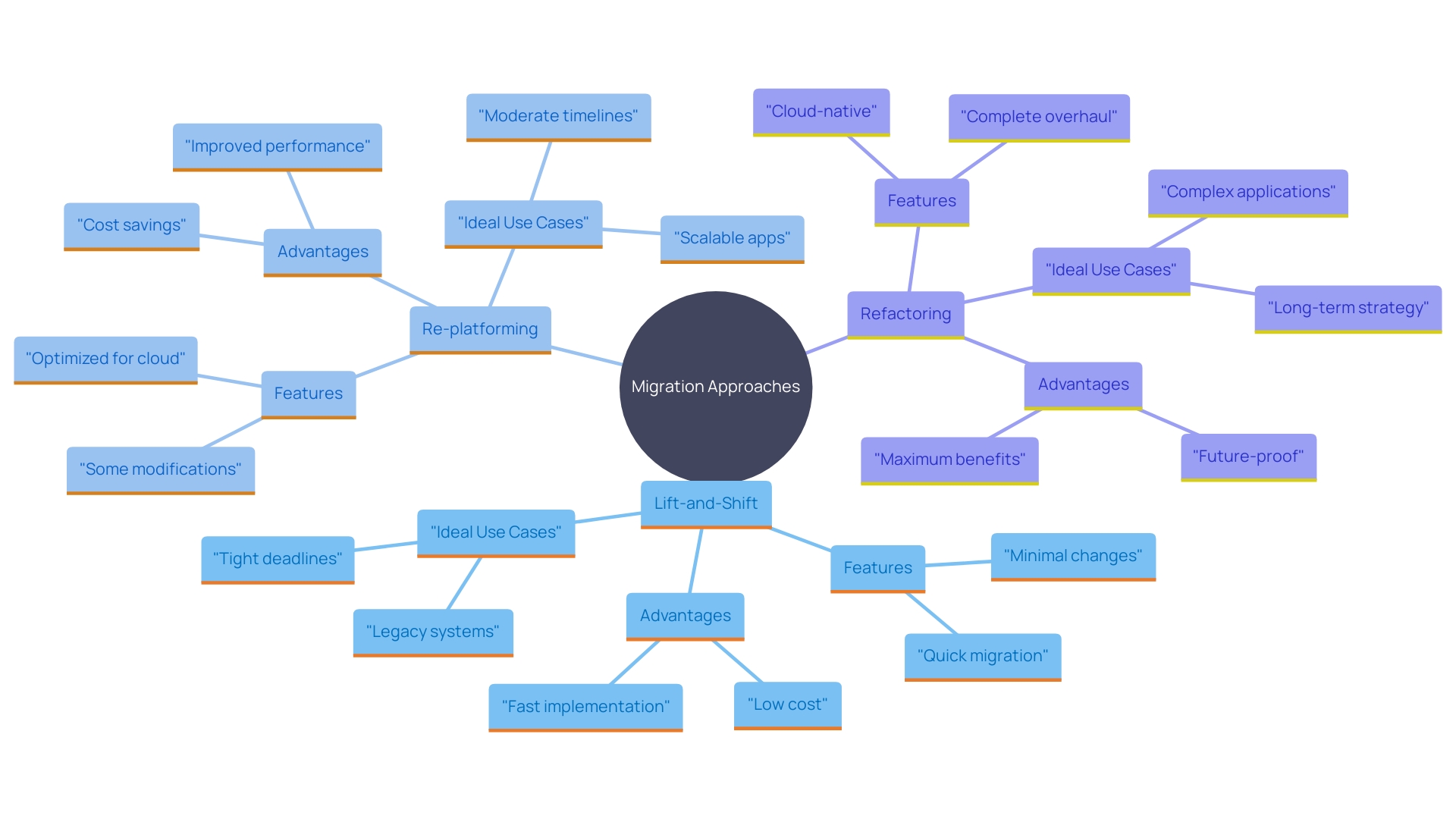
Developing a Detailed Cloud Migration Plan
Creating a thorough relocation strategy is essential for facilitating a seamless shift to the online environment. Begin by conducting a thorough cloud readiness assessment to evaluate your current technology stack, application characteristics, architecture, and data. This evaluation will assist in recognizing any distinctive hardware or legacy systems that may present difficulties during the transfer process.
Next, outline each phase of the project, including a detailed timeline with key milestones and deadlines. Distribute resources effectively, ensuring that your team has the necessary tools and support to implement the transition plan. Define clear roles and responsibilities for each team member to foster accountability and streamline the process.
To enhance the transition strategy, consider adopting a multiprovider approach and encourage collaboration among key partners early on. This not only facilitates better planning but also ensures that all security measures meet current standards.
Additionally, prioritize applications based on business needs, such as processing times and sensitivity, and blend automation with manual processes to optimize efficiency. 'As per Gartner, by 2025, 85% of organizations are anticipated to embrace a cloud-first strategy, making it essential to remain proactive with a well-organized transition plan.'.
As David S. Linthicum, a renowned industry expert, emphasizes, there is no one-size-fits-all approach to transitioning to the cloud, and each organization's journey is unique. Hence, customize your transition strategy to align with your specific goals and infrastructure requirements.
Finally, ensure continuous communication and information sharing across the organization by creating a centralized playbook. This will democratize data gathering and enable all stakeholders to remain informed and aligned throughout the transition process. By meticulously planning and executing each step, your organization can achieve a successful transition to digital solutions and unlock its full potential.
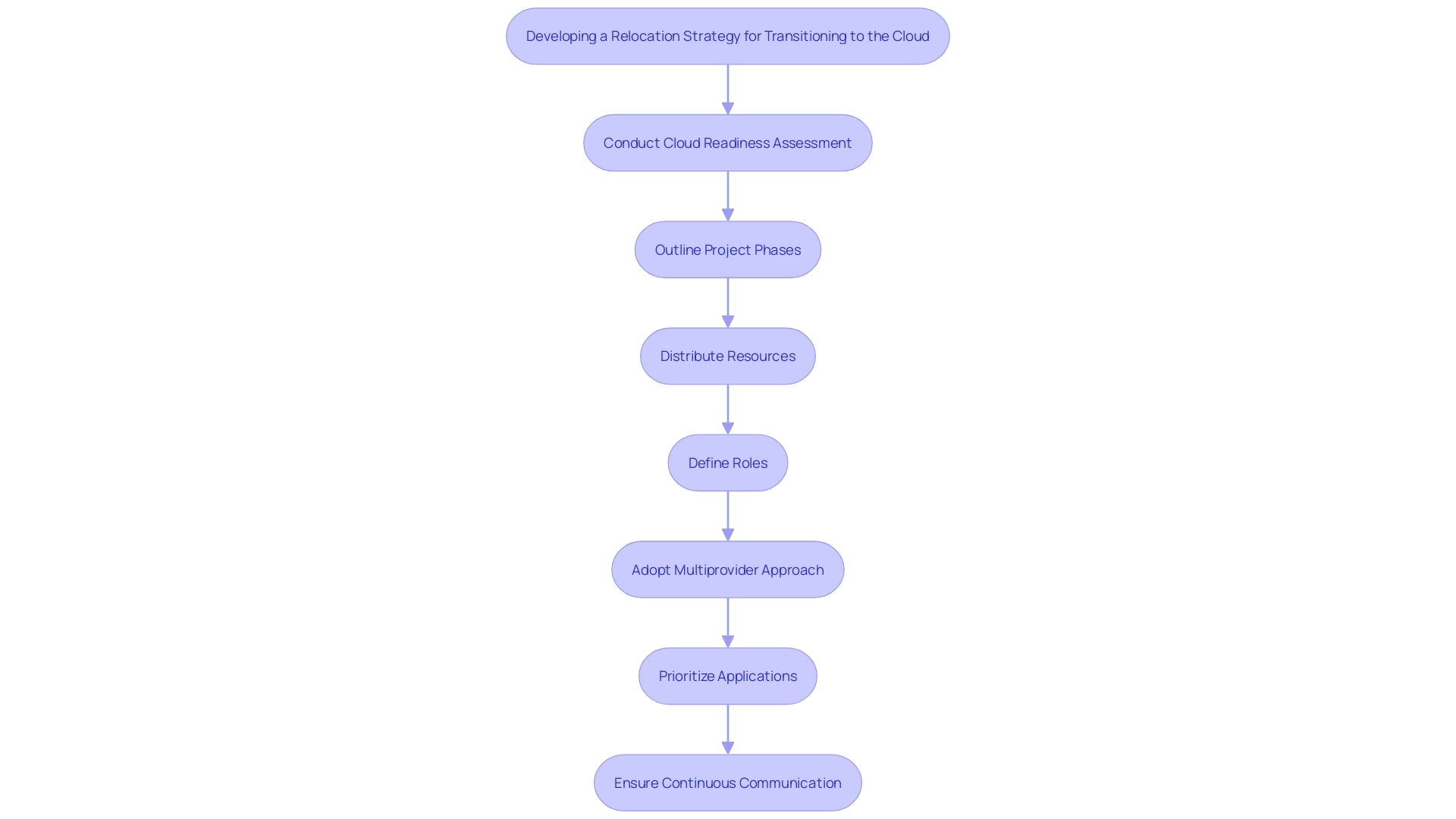
Identifying and Managing Risks During Cloud Migration
Completely recognizing possible hazards in the migration process is essential for a successful shift to the online environment. Key risks include data loss, downtime, and compliance issues. For instance, applications that rely on unique hardware not represented in remote servers can be particularly challenging to migrate. Carrying out a thorough readiness evaluation for online services can assist in identifying these technological obstacles.
A well-defined risk management plan should be developed to tackle these challenges. This plan must include mitigation strategies and contingency plans to address potential issues effectively. For example, ensuring compliance with data security regulations such as the GDPR, which mandates data residency within the EEA and emphasizes data minimization and storage limitations, is essential.
Moreover, recent discussions highlight the importance of integrating efficient monitoring and cost management practices to enhance security and prevent resource hijacking. By prioritizing a structured and informed approach, organizations can navigate the complexities of moving to the cloud with greater confidence.
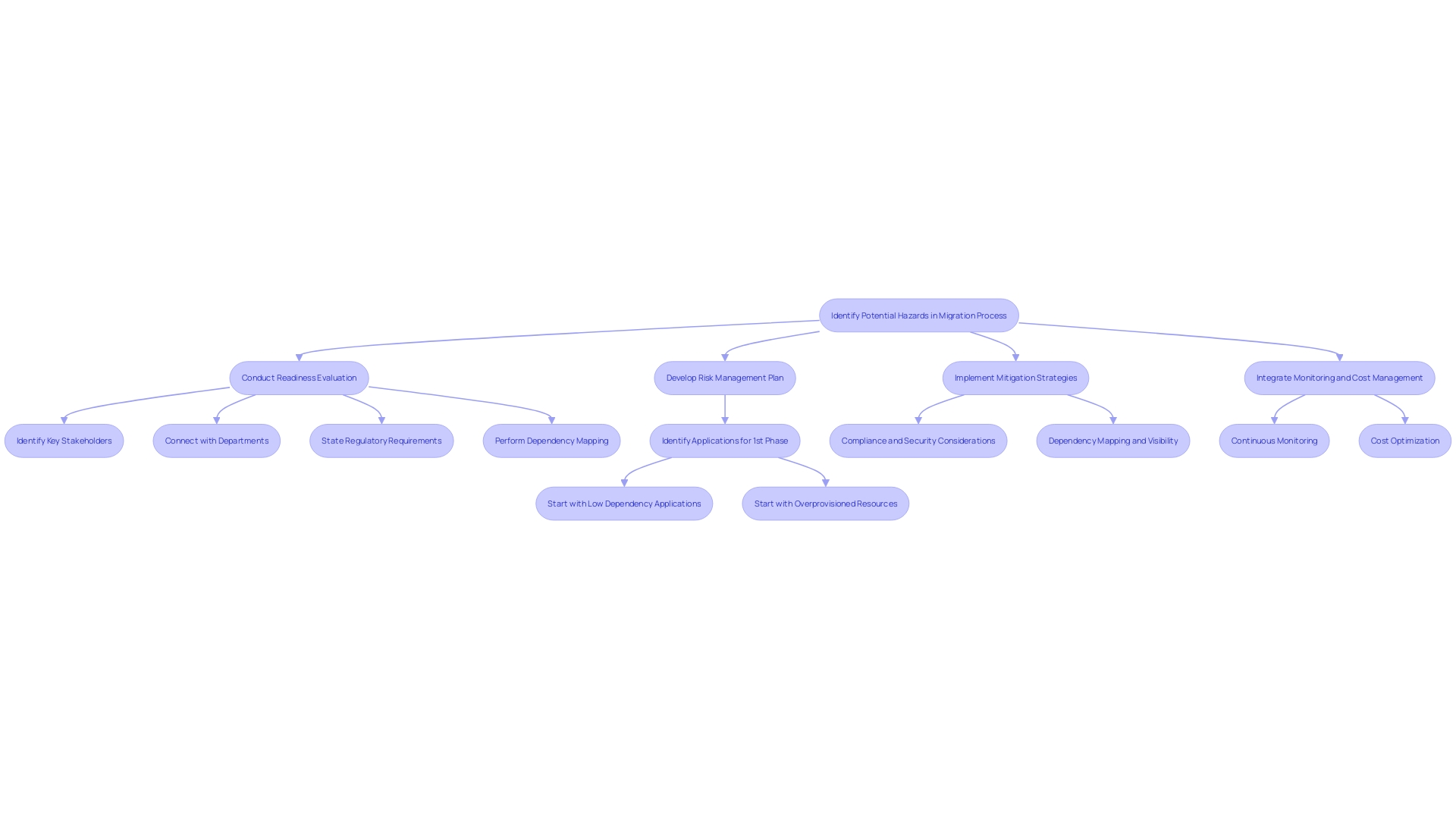
Testing and Validating the Migration Process
After carrying out the migration, it is essential to perform thorough testing to confirm all programs and data have been moved successfully. 'This process should include a thorough evaluation of the current technology stack, software characteristics, architecture, and data integrity.'. By doing so, organizations can identify any potential issues that may arise due to unique hardware configurations or non-virtualizable components, such as specific IoT applications or cryptocurrency cold wallets.
Performance metrics must be closely monitored to verify they meet the predefined objectives. This step is essential to guarantee that the migrated environment functions as expected and supports business operations without disruption. Resolving any discrepancies or performance issues prior to completely moving to the online environment is crucial to prevent operational setbacks.
David S. Linthicum, a specialist in the field, highlights the significance of evaluating readiness for the technology environment and implementing essential changes to systems, procedures, and personnel to guarantee a smooth transition. His insights emphasize that transferring to online services necessitates not only technical modifications but also a strategic method to align with organizational objectives.
Furthermore, utilizing the knowledge of service providers with a successful history can greatly improve the transition process. These providers offer robust security measures and a range of services tailored to meet specific organizational needs, ensuring a smooth and secure transition to the online environment.
In summary, thorough testing and validation are crucial in the transition process, ensuring that all digital assets operate seamlessly in the new environment and meet the organization's performance standards.
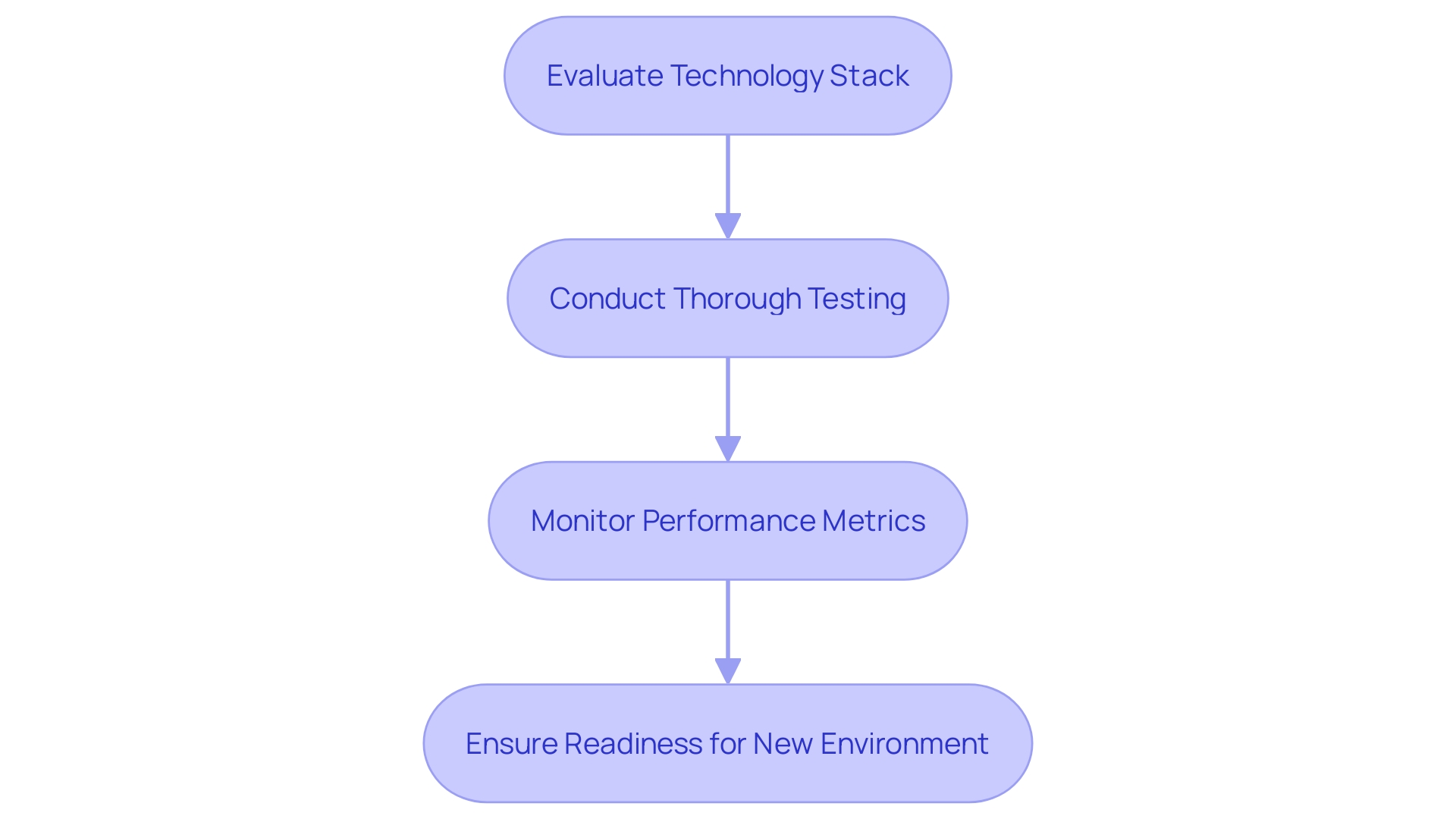
Optimizing Your Cloud Environment Post-Migration
After finishing the migration, focus on improving the virtual environment for better performance and cost-effectiveness. Begin by implementing robust monitoring tools to track usage and performance metrics comprehensively. These tools should provide insights into month-to-month, day-to-day, and even hour-to-hour trends, allowing you to identify cost changes proactively.
Regularly review and adjust resources to ensure alignment with evolving business needs. This involves conducting a thorough readiness assessment, evaluating the current technology stack, app characteristics, architecture, and data. 'Migration can be particularly challenging for applications built on unique hardware not represented in remote servers, such as specific IoT applications or cryptocurrency cold wallets.'.
To address these challenges, leverage optimization algorithms to identify near-optimal solutions that balance time and resource constraints. As highlighted by experts from the Azure Core Insights Data Science Team, optimization problems are prevalent in the technology industry and require sophisticated approaches to manage complexity and computational resources effectively.
Additionally, utilize dashboards to isolate costs into meaningful subcategories. This visibility enables better cost management and helps weigh expenses against the value or budget for specific components of your architecture. By working with a cloud-managed services provider with a proven track record, you can create a transition plan that ensures a smooth migration and continuous optimization of your cloud environment.
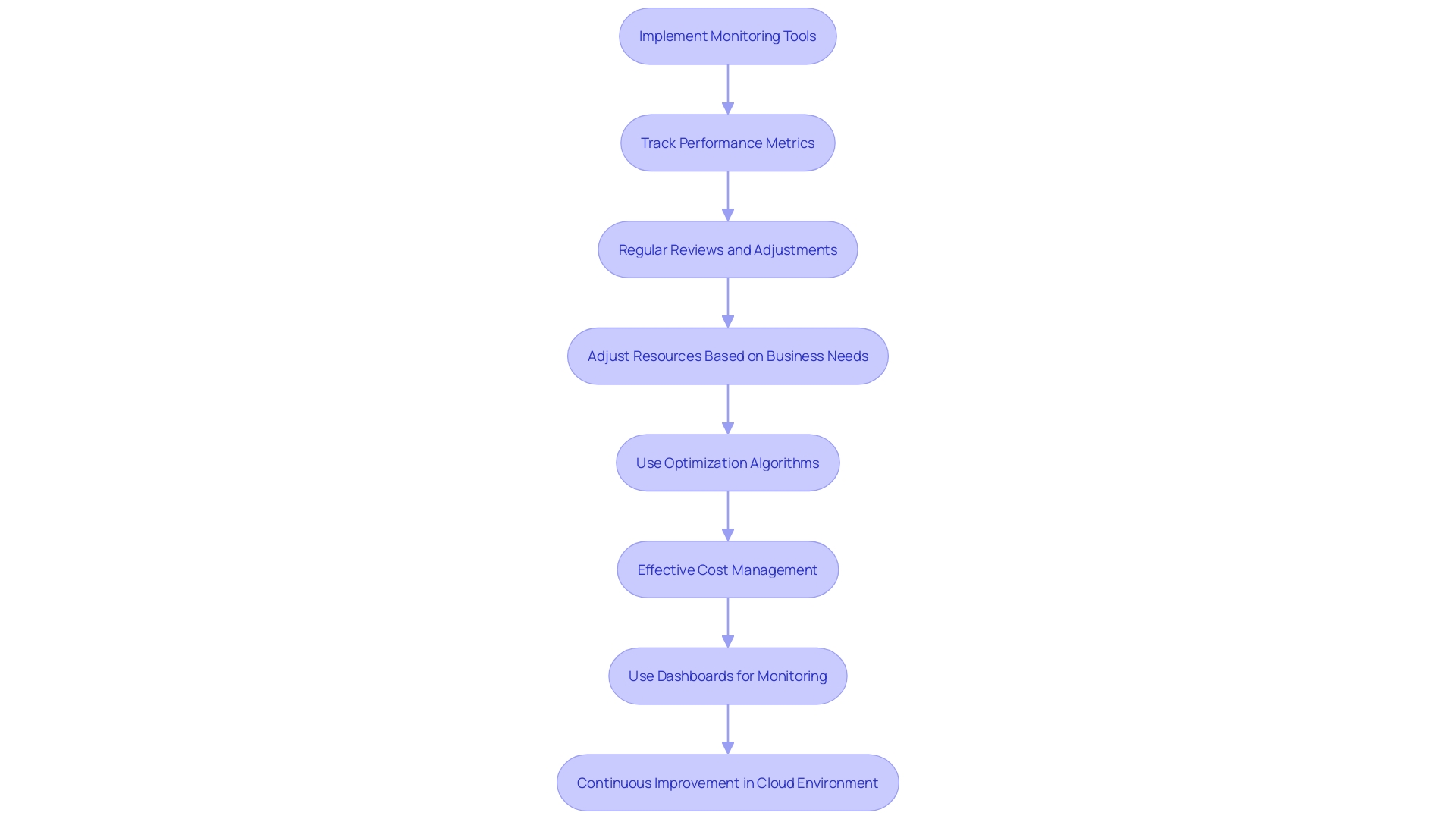
Conclusion
Transitioning to a cloud-based infrastructure is a multifaceted process that requires careful planning and execution at every stage. Defining clear migration objectives is paramount, as it sets the foundation for aligning the migration strategy with broader business goals. Assessing IT infrastructure readiness ensures that organizations can identify and mitigate potential risks, laying the groundwork for a successful migration.
Selecting the appropriate migration strategy—whether lift-and-shift, re-platforming, or refactoring—can significantly impact the migration's effectiveness. Each approach carries its own set of benefits and challenges, necessitating a tailored plan that addresses specific organizational needs. A comprehensive migration plan that outlines each phase, allocates resources efficiently, and fosters collaboration among stakeholders is essential for a smooth transition.
Moreover, identifying and managing risks throughout the migration process safeguards against data loss, downtime, and compliance issues. Rigorous testing and validation post-migration are critical to ensure that all applications and data function as intended in the new environment. Finally, ongoing optimization of the cloud environment enhances performance and cost-efficiency, allowing organizations to adapt to changing business needs while maximizing the benefits of cloud computing.
Ultimately, a well-structured cloud migration strategy not only facilitates immediate operational improvements but also positions organizations for sustained growth and innovation in a rapidly evolving technological landscape. By navigating these complexities with expertise and diligence, organizations can unlock the full potential of cloud computing, driving long-term success.




